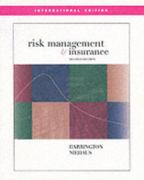Question
Question 3 Read attachment 5. (Note that this question is about the market in which home-owners (borrowers) obtain funds from banks (lenders). In this market,
Question 3
Read attachment 5.
(Note that this question is about the market in which home-owners (borrowers) obtain
funds from banks (lenders). In this market, home-owners can be regarded as consumers;
and banks as suppliers. The price in the market is the rate of interest for loans made by
banks to home-owners; and quantity traded is the amount of funds borrowed/loaned.)
Suppose that the demand for funds from borrowers from banks for home loans is inversely
related to the rate of interest. The total cost for a bank to supply funds to borrowers is
^rq+ q2
2 +FC; where ^r is the RBA cash rate, FC is the fixed cost of operating and q is the
total quantity of funds loaned. Hence MC = ^r + q and ATC = ^r + q
2 + FC
q . The Reserve
Bank of Australia decreases the cash rate from drhigh to drlow.
In answering these questions, you do not need to make numeric/algebraic calculations,
you just need to explain your answer in words. Using graphs/diagrams may help. The
reason that the specific MC and ATC functions have been given is to show that they will
shift up and down by the entire amount of a change to the RBA cash rate, ^r.
(a) (1 mark) Suppose that the banking market is perfectly competitive, with a long-run
supply curve that is constant with price (rate of interest). Would the entire decrease
in cash rate be passed onto borrowers in the long-run? (Note: By passed on, what
is meant is whether the equilibrium rate of interest will decrease by the full amount
of the decrease in the cash rate from drhigh to drlow)
(b) (1 mark) Suppose that the banking market is monopolistically competitive. Would
the entire decrease in cash rate be passed onto borrowers in the long-run?
2
(c) (1 mark) How are consumer surplus and banks' profits affected in the long-run
by the decrease in the RBA cash rate when: (i) the banking market is perfectly
competitive; and (ii) the banking market is monopolistically competitive.
Step by Step Solution
There are 3 Steps involved in it
Step: 1

Get Instant Access to Expert-Tailored Solutions
See step-by-step solutions with expert insights and AI powered tools for academic success
Step: 2

Step: 3

Ace Your Homework with AI
Get the answers you need in no time with our AI-driven, step-by-step assistance
Get Started


